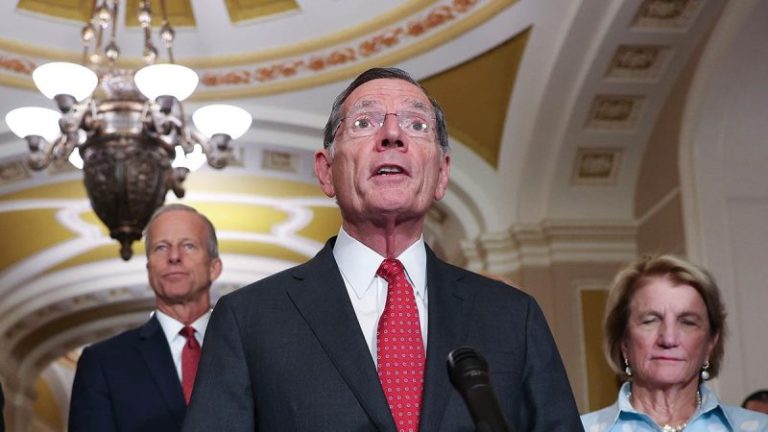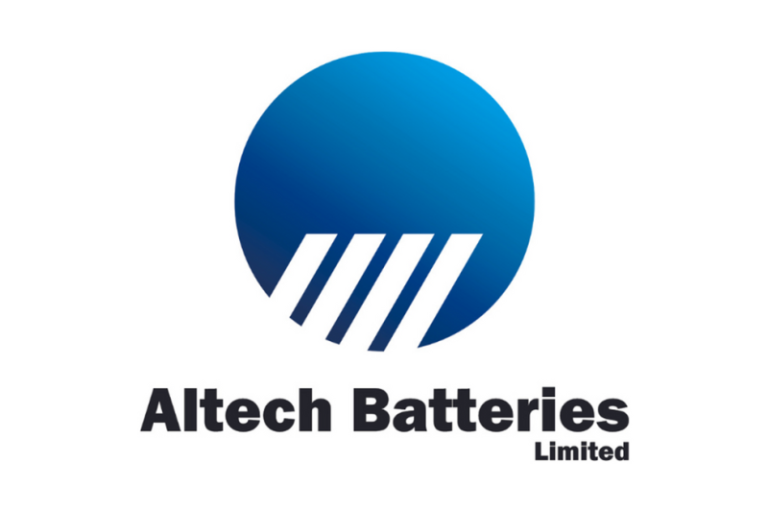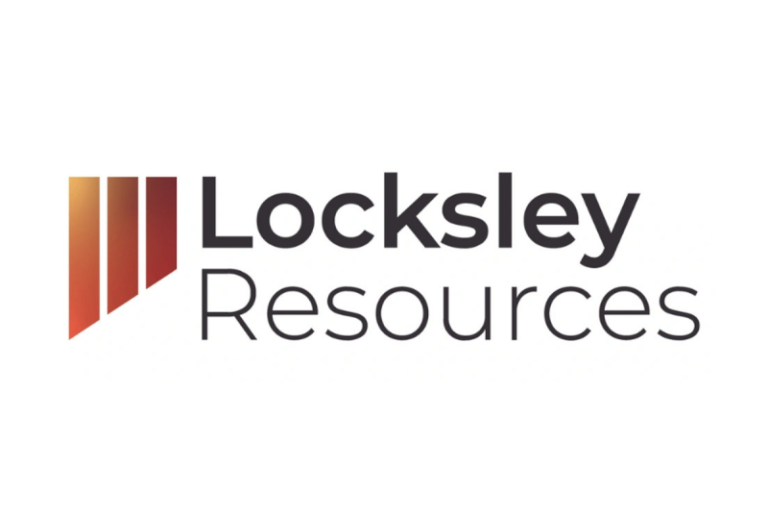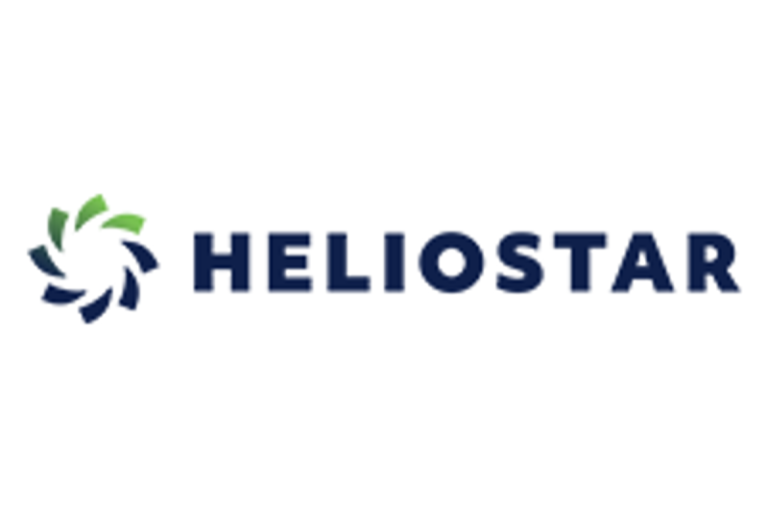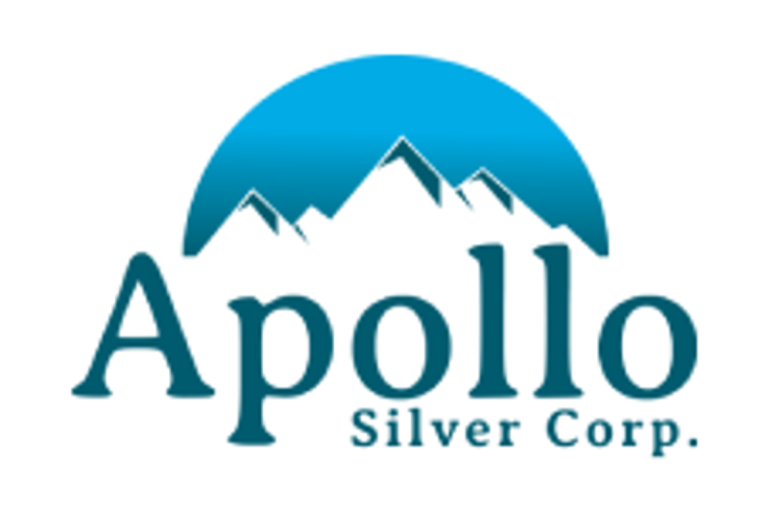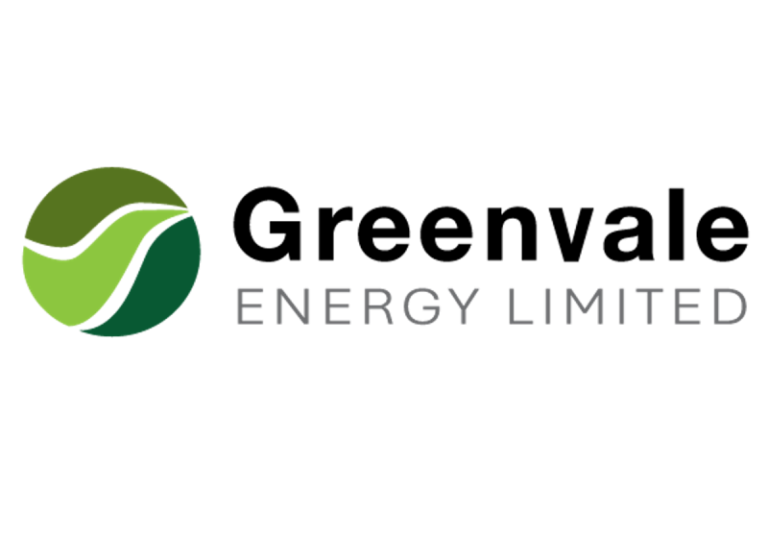Q2 2025 Quarter Highlights
- Q2 2025 production of 7,396 Gold Equivalent Ounces (GEOs)
- Q2 2025 sales of 8,556 GEOs
- Consolidated cash costs of $1,413 per GEO sold and consolidated all-in sustaining costs (‘AISC’) of $1,541 for Q2 2025
- The Company is on track to achieve its annual sales guidance of 31,000 to 41,000 GEOs, annual cash cost of $1,800-1,900 per GEO sold and AISC of $1,950-2,100 per GEO sold for 2025
- Mine operating earnings of $14.3M in Q2 2025
- Closing the quarter with $29.7M in cash, $51.7 million in working capital and no debt
Heliostar Metals Ltd. (TSXV: HSTR,OTC:HSTXF) (OTCQX: HSTXF) (FSE: RGG1) (‘Heliostar’ or the ‘Company’) today reported unaudited financial results for the three months ended June 30, 2025 (‘Q2 2025’), which corresponds to the first quarter of Heliostar’s fiscal reporting year 2025. Results are presented in US dollars, unless stated.
Heliostar CEO, Charles Funk, commented, ‘Q2 2025 was another strong quarter for Heliostar with the mines continuing to perform as expected, funding our production and resource growth programs, and further strengthening our financial position. Our consolidated margin continues to expand in a strong gold price environment, with the Company reporting an operating margin of 51%. Looking forward, the Company is restarting mining at San Agustin in late 2025 and expects to expand its production profile in Q4 2025 and into 2026. We continue to deliver on our commitment to grow the Company to a mid-tier gold producer.
‘The strong balance sheet and operating cash flow allow Heliostar to accelerate our growth plans. At La Colorada, we are drilling additional historical stockpiles with the objective of extending production through 2026 ahead of the planned pit expansion at Veta Madre. At San Agustin, the Company has satisfied all permitting requirements to develop the Corner area, and preparations are ongoing to restart mine operations before the end of the year. This restart is fully funded from cash on the Company’s balance sheet. Further, the Company has committed to an expanded $9.5 million program at Ana Paula in 2025, including a minimum 15,000 metre drilling with the objective of delivering mineral reserves to support a 10-year life of mine in the upcoming feasibility study.
‘In the quarter, the Company has been working on a number of technical reports to unlock additional value from our assets. The slightly delayed, updated La Colorada technical report will be completed in the coming weeks. A pre-feasibility study is planned for Cerro Del Gallo this year, and the feasibility study for Ana Paula is continuing to progress.’
Second Quarter 2025 Quarterly Conference Call
Heliostar will host a quarterly conference call on Thursday, September 4, 2025, at 11:00 AM, Eastern Time/8:00 AM Pacific Time. The call will provide a corporate update following the release of our financial and operating results for the second quarter of 2025.
Please use the link here to register for the call or visit the Company website at www.heliostarmetals.com.
Q2 2025 Operational and Financial Highlights
Total gold production of 7,396 gold equivalent ounces (‘GEO’) (7,262 gold ounces) in Q2 2025. Gold production was realized from mining the Junkyard Stockpile at the La Colorada mine, as well as re-leaching the previously stacked ore at the La Colorada and the San Agustin mines. Consolidated production also benefited from a nominal contribution from residual production from the rinsing of residual leach pads at the El Castillo mine. Production year-to-date (‘YTD’) 2025 is consistent with the 2025 guidance issued by the Company on February 4, 2025, which remains unchanged.
Total Cash Cost of $1,413 per GEO produced in Q2 2025. The combined YTD cash cost (see ‘Non-IFRS Measures’) is $1,257 per GEO.
Total AISC of $1,541 per GEO sold in Q2 2025. The consolidated YTD AISC (see ‘Non-IFRS Measures’) is $1,602 per GEO.
Both Total Cash Costs and AISC are ahead of the 2025 guidance range; however, the Company anticipates costs will increase in the latter half of the year as residual leaching at San Agustin declines ahead of stacking new ore from the Corner area, and particularly due to one-off capital costs incurred to restart primary mining from the Corner area.
Mine Operating Earnings of $14.3 million in Q2 2025. The Company continued to report strong results in Q2 2025, with continued improvements in operating performance, as well as benefiting from selling into a rising gold market. Mine operating earnings YTD 2025 are $26.1 million.
Net income attributable to shareholders of $1.9 million, or $0.01 per share, for Q2 2025. Net income of $1.9 million ($0.01 per share) for Q2 2025 compared to a net loss attributable to shareholders of $2.3 million ($0.01 loss per share) for Q2 2024.
Strengthened financial position and liquidity. On June 30, 2025, the Company had cash of $29.7 million and working capital (defined as current assets less current liabilities) of $51.7 million, with an increase in working capital of $10.1 million over the prior quarter. As of June 30, 2025, the Company had no debt.
Achieved stable production at La Colorada mine. The mining of new ore restarted at the Junkyard Stockpile in January 2025. Production from the Junkyard Stockpile has increased steadily during Q2 2025, with operating costs as expected, grade in line with the reserve model and ore tonnes reconciling slightly higher than expected. Production YTD 2025 was 7,850 GEOs (7,572 gold ounces). Ore feed from the Junkyard Stockpile is planned to continue into 2026, with other historical stockpiles identified to provide additional material to be crushed and stacked on the leach pad thereafter. Further, subject to receiving certain regulatory approvals, the Company intends to expand the Veta Madre pit to exploit 43k ounces of gold reserves.
Restart of mining at San Agustin. The Company was able to complete the regulatory requirements to enable the approval to restart mining at San Agustin from the Corner area. Preparation work to commence mining is underway, and the Company anticipates production from the Corner starting in Q4 2025 and continuing into 2027. Recoverable reserves at the Corner are estimated at 44.5k ounces of gold.
Continuing to advance the development of the flagship Ana Paula Project. In July 2025, the Company commenced an expanded $9.5 million exploration and development program, including a minimum 15,000 metre drill program at Ana Paula Project. The program has the objective of upgrading existing inferred mineral resources to demonstrate more than a 10-year mine life in the upcoming feasibility study. Technical and regulatory programs are being advanced in parallel and will continue through 2026 to complete a bankable feasibility study.
Preparation of updated technical reports. The Company is concluding an updated technical report for La Colorada and is planning to complete a prefeasibility study (‘PFS’) for the Cerro del Gallo Project in 2025 and continues to advance the Ana Paula Project feasibility study.
Operational and Financial Results
Results are reported for the three months ended June 30, 2025 (‘Q2 2025’), which corresponds to the first quarter of Heliostar’s fiscal reporting year 2026.
A summary of the Company’s consolidated operational and financial results for the reporting period is presented below:
| Key Performance Metrics |
Q2 2025 |
Q2 2024 |
| Operational |
|
|
| Gold produced |
7,262 |
0 |
| Gold equivalent ounces (‘GEOs’) produced |
7,419 |
0 |
| Gold sold |
8,375 |
0 |
| Gold equivalent ounces (‘GEOs’) sold |
8,556 |
0 |
| Cash cost1 |
1,413 |
0 |
| All-in sustaining costs1 (‘AISC’) |
1,541 |
0 |
| Financial (in ‘000s) |
|
|
| Revenues |
27,926 |
0 |
| Mine operating earnings |
14,256 |
0 |
| Exploration expenses |
1,916 |
1,502 |
| Net income (loss) |
1,892 |
(2,293) |
| Cash |
29,703 |
2,379 |
| Total assets |
122,943 |
22,574 |
| Working Capital |
51,687 |
(1,121) |
- Non-IFRS measure. Refer to the ‘Non-IFRS Measures’ section of this news release.
Operational Review
Consolidated Production and Costs
Q2 2025 was the Company’s third reporting period with metals production. The Company had no production in Q2 2024.
Gold production of 7,396 GEOs (7,262 gold ounces) for Q2 2025 was reported from the La Colorada mine and the San Agustin mine, with a nominal amount reported from the El Castillo mine, which has commenced reclamation. The combined YTD 2025 production of 16,477 GEOs of gold (16,039 gold ounces) is consistent with the 2025 guidance issued by the Company.
The combined cash costs for the producing operations were $1,413 per GEO sold, and the consolidated AISC was $1,541 per GEO sold. The combined cash costs and AISC are currently ahead of the 2025 guidance issued by the Company, and full-year results are expected to be within the guidance range.
La Colorada Mine
Operating results for Q2 2025 were as follows:
| La Colorada |
|
Q2 2025 |
YTD 2025 |
| Gold produced |
oz |
3,464 |
7,572 |
| Gold equivalent ounces (‘GEOs’) produced |
GEO |
3,538 |
7,850 |
| Gold sold |
oz |
3,631 |
6,743 |
| Gold equivalent ounces (‘GEOs’) sold |
GEO |
3,747 |
6,997 |
| Cash cost1 |
$/GEO sold |
1,296 |
1,101 |
| All-in sustaining costs1 (‘AISC’) |
$/GEO sold |
1,425 |
1,232 |
In January 2025, mining of new ore restarted at the Junkyard Stockpile by the Company, alongside re-leach activities started by the previous operator.
During the reporting period, the La Colorada mine produced 3,538 GEOs (3,464 gold ounces). Total revenues of $12.0 million were reported from sales of 3,747 GEOs. A series of actions were implemented at La Colorada to improve re-leaching performance, with gold production from re-leaching exceeding plans. Production from the Junkyard Stockpile has increased steadily during Q2 2025 and continues to meet all expected parameters.
For the reporting period, cash costs were $1,296 per GEO ($1,101 per GEO YTD 2025), and AISC was $1,425 per GEO ($1,232 per GEO YTD 2025), currently an improvement on 2025 guidance.
The Company plans to continue mining of the Junkyard Stockpile through 2025 and into 2026, with other historical stockpiles identified to provide additional, continued feed to the crushers thereafter. Further, subject to receiving certain regulatory approvals, the Company intends to expand the Veta Madre pit to exploit 43k ounces of gold reserve, which will be timed sequentially with the ore feeds from the historical stockpiles.
San Agustin Mine
Operating results for Q2 2025 were as follows:
| San Agustin |
|
Q2 2025 |
YTD 2025 |
| Gold produced |
oz |
3,564 |
7,975 |
| Gold equivalent ounces (‘GEOs’) produced |
GEO |
3,622 |
8,129 |
| Gold sold |
oz |
4,595 |
8,752 |
| Gold equivalent ounces (‘GEOs’) sold |
GEO |
4,660 |
8,930 |
| Cash cost1 |
$/GEO sold |
$ 1,529 |
1,407 |
| All-in sustaining costs1 (‘AISC’) |
$/GEO sold |
$ 1,597 |
1,485 |
In September 2024, the previous owners of San Agustin placed the mine under care and maintenance, with metals production continuing from the re-leaching of residual leach pads.
During the reporting period, the San Agustin mine produced 3,622 GEOs (3,564 gold ounces). Total revenues of $14.9 million were reported from sales of 4,660 GEOs. A series of actions were implemented at San Agustin to improve re-leaching performance, with gold production from re-leaching exceeding 2025 guidance.
For the reporting period, cash costs were $1,529 per GEO ($1,407 per GEO YTD 2025), and the consolidated AISC was $1,597 per GEO ($1,485 per GEO YTD 2025), which is currently an improvement on 2025 guidance.
The Company has completed regulatory requirements to enable the restart of mining at San Agustin from the Corner area (see News Release dated July 22, 2025). Work to commence mining is underway, including administrative programs and small ancillary capital projects, and the Company anticipates production from the Corner starting in Q4 2025 and continuing into 2027. Recoverable reserves at the Corner are estimated at 44.5k ounces of gold.
El Castillo Mine
Operating results for Q2 2025 were as follows:
| El Castillo |
|
Q2 2025 |
YTD 2025 |
| Gold produced |
oz |
234 |
491 |
| Gold equivalent ounces (‘GEOs’) produced |
GEO |
236 |
499 |
| Gold sold |
oz |
149 |
646 |
| Gold equivalent ounces (‘GEOs’) sold |
GEO |
150 |
652 |
| Cash cost1 |
$/GEO sold |
782 |
866 |
| All-in sustaining costs1 (‘AISC’) |
$/GEO sold |
2,679 |
1,729 |
In late 2022, the previous owners of El Castillo placed the mine under care and maintenance, and the mine is now considered in reclamation. Some nominal metal production has been possible from the rinsing of residual heap leach pad during reclamation activities.
During the reporting period, the El Castillo mine produced 236 GEOs (234 gold ounces). Total revenues of $0.5 million were reported from sales of 150 GEOs.
Reclamation expenditures at the El Castillo mine for the three months ended June 30, 2025, were $nil; however, $1.1 million was incurred in indirect reclamation expenditures for maintenance of land, permits and general expenses required to maintain the site in good standing. Further reclamation work will continue to be performed in 2025.
Ana Paula Project
Development and Exploration expenditures at the flagship Ana Paula Project were $0.8 million in Q2 2025 ($1.2 million in Q2 2024).
During Q2 2025, the Company initiated a $9.5 million exploration and development budget, including a minimum 15,000 metre drilling program at Ana Paula with the objective of delivering mineral reserves to support a 10-year life of mine. On August 27, 2025, the Company announced initial results from the first resource conversion holes, including 30.2 metres at 6.29 grams per tonne gold.
During Q2 2025, the Company completed trade-off studies and determined a preferred process flowsheet for the project. Technical and regulatory programs are being advanced and will continue through 2026 to complete a bankable feasibility study.
Cerro del Gallo Project
The process of advancing the additional development and engineering required at the Cerro del Gallo Project is ongoing.
During Q2 2025, the Company began a strategic review of the Project and initiated technical programs with the objective of identifying and evaluating the next development steps.
During Q2 2025, the Company commissioned the preparation of a prefeasibility study for the Cerro del Gallo Project. The study is planned to be completed in 2025. All major environmental and other permits will need to be obtained before an investment decision can be considered by the Company.
Funding Overview
In the three months ended June 30, 2025, 5,254,548 warrants and 422,082 stock options were exercised for total proceeds of $1.3 million and 906,249 RSUs were converted.
As of June 30, 2025, the Company had no debt.
Non-IFRS Measures. This news release refers to certain financial measures, such as all-in-sustaining costs, which are not measures recognized under IFRS and do not have a standardized meaning prescribed by IFRS. These measures may differ from those made by other companies and, accordingly, may not be comparable to such measures as reported by other companies. These measures have been derived from the Company’s financial statements because the Company believes that they are of assistance in understanding the results of operations and its financial position. Certain additional disclosures for these specified financial measures have been incorporated by reference and can be found in the Company’s MD&A for Q4 2024, available on SEDAR+.
Cash costs. The Company uses cash costs per ounce of metals sold to monitor its operating performance internally. The most directly comparable measure prepared in accordance with IFRS is the cost of sales. The Company believes this measure provides investors and analysts with useful information about its underlying cash costs of operations. The Company also believes it is a relevant metric used to understand its operating profitability and ability to generate cash flow. Cash costs are measures developed by metals companies in an effort to provide a comparable standard; however, there can be no assurance that the Company’s reporting of these non-IFRS financial measures are similar to those reported by other mining companies. They are widely reported in the metals mining industry as a benchmark for performance, but do not have a standardized meaning and are disclosed in addition to IFRS financial measures. Cash costs include production costs, refinery and transportation costs and extraordinary mining duty. Cash costs exclude non-cash depreciation and depletion and site share-based compensation.
AISC. All-in Sustaining Costs (‘AISC’) more fully defines the total costs associated with producing precious metals. The AISC is calculated based on guidelines published by the World Gold Council (‘WGC’), which were first issued in 2013. In light of new accounting standards and to support further consistency of application, the WGC published an updated Guidance Note in 2018. Other companies may calculate this measure differently because of differences in underlying principles and policies applied. Differences may also arise due to a different definition of sustaining versus growth capital. Note that with respect to AISC metrics within the technical reports, because such economics are disclosed at the project level, corporate general and administrative expenses were not included in the AISC calculations.
Statement of Qualified Persons
Gregg Bush, P.Eng., Mike Gingles, and Stewart Harris, P. Geo., Qualified Persons, as such term is defined by National Instrument 43-101 — Standards of Disclosure for Mineral Projects, have reviewed the scientific and technical information that forms the basis for this news release and have approved the disclosure herein. Mr. Bush is employed as Chief Operating Officer of the Company, Mr. Gingles is employed as Vice President of Corporate Development, and Mr. Harris is employed as Exploration Manager.
About Heliostar Metals Ltd.
Heliostar aims to grow to become a mid-tier gold producer. The Company is focused on increasing production and developing new resources at the La Colorada and San Agustin mines in Mexico, and on developing the 100% owned Ana Paula Project in Guerrero, Mexico.
FOR ADDITIONAL INFORMATION, PLEASE CONTACT:
Charles Funk
President and Chief Executive Officer
Heliostar Metals Limited
Email: charles.funk@heliostarmetals.com
Phone: +1 844-753-0045 |
Rob Grey
Investor Relations Manager
Heliostar Metals Limited
Email: rob.grey@heliostarmetals.com
Phone: +1 844-753-0045 |
Neither TSX Venture Exchange nor its Regulation Services Provider (as that term is defined in the policies of the TSX Venture Exchange) accepts responsibility for the adequacy or accuracy of this release.
Cautionary Statement Regarding Forward-Looking Information
This news release includes certain ‘Forward-Looking Statements’ within the meaning of the United States Private Securities Litigation Reform Act of 1995 and ‘forward-looking information’ under applicable Canadian securities laws. When used in this news release, the words ‘anticipate’, ‘believe’, ‘estimate’, ‘expect’, ‘target’, ‘plan’, ‘forecast’, ‘may’, ‘would’, ‘could’, ‘schedule’ and similar words or expressions, identify forward-looking statements or information. These forward-looking statements or information relate to, among other things: the Company’s goal of becoming a mid-tier producer, the mine performance, production plans and the free cashflow generation from our operating mines, all profits generated from operations to be reinvested directly into our Companies growth and this reinvestment will focus on expanding production and growing resources across our portfolio.
Forward-looking statements and forward-looking information relating to the terms and completion of the Facility, any future mineral production, liquidity, and future exploration plans are based on management’s reasonable assumptions, estimates, expectations, analyses and opinions, which are based on management’s experience and perception of trends, current conditions and expected developments, and other factors that management believes are relevant and reasonable in the circumstances, but which may prove to be incorrect. Assumptions have been made regarding, among other things, the receipt of necessary approvals, price of metals; no escalation in the severity of public health crises or ongoing military conflicts; costs of exploration and development; the estimated costs of development of exploration projects; and the Company’s ability to operate in a safe and effective manner and its ability to obtain financing on reasonable terms.
These statements reflect the Company’s respective current views with respect to future events and are necessarily based upon a number of other assumptions and estimates that, while considered reasonable by management, are inherently subject to significant business, economic, competitive, political and social uncertainties and contingencies. Many factors, both known and unknown, could cause actual results, performance, or achievements to be materially different from the results, performance or achievements that are or may be expressed or implied by such forward-looking statements or forward-looking information and the Company has made assumptions and estimates based on or related to many of these factors. Such factors include, without limitation: precious metals price volatility; risks associated with the conduct of the Company’s mining activities in foreign jurisdictions; regulatory, consent or permitting delays; risks relating to reliance on the Company’s management team and outside contractors; risks regarding exploration and mining activities; the Company’s inability to obtain insurance to cover all risks, on a commercially reasonable basis or at all; currency fluctuations; risks regarding the failure to generate sufficient cash flow from operations; risks relating to project financing and equity issuances; risks and unknowns inherent in all mining projects, including the inaccuracy of reserves and resources, metallurgical recoveries and capital and operating costs of such projects; contests over title to properties, particularly title to undeveloped properties; laws and regulations governing the environment, health and safety; the ability of the communities in which the Company operates to manage and cope with the implications of public health crises; the economic and financial implications of public health crises, ongoing military conflicts and general economic factors to the Company; operating or technical difficulties in connection with mining or development activities; employee relations, labour unrest or unavailability; the Company’s interactions with surrounding communities; the Company’s ability to successfully integrate acquired assets; the speculative nature of exploration and development, including the risks of diminishing quantities or grades of reserves; stock market volatility; conflicts of interest among certain directors and officers; lack of liquidity for shareholders of the Company; litigation risk; and the factors identified under the caption ‘Risk Factors’ in the Company’s public disclosure documents. Readers are cautioned against attributing undue certainty to forward-looking statements or forward-looking information. Although the Company has attempted to identify important factors that could cause actual results to differ materially, there may be other factors that cause results not to be anticipated, estimated or intended. The Company does not intend, and does not assume any obligation, to update these forward-looking statements or forward-looking information to reflect changes in assumptions or changes in circumstances or any other events affecting such statements or information, other than as required by applicable law.
To view the source version of this press release, please visit https://www.newsfilecorp.com/release/264693


